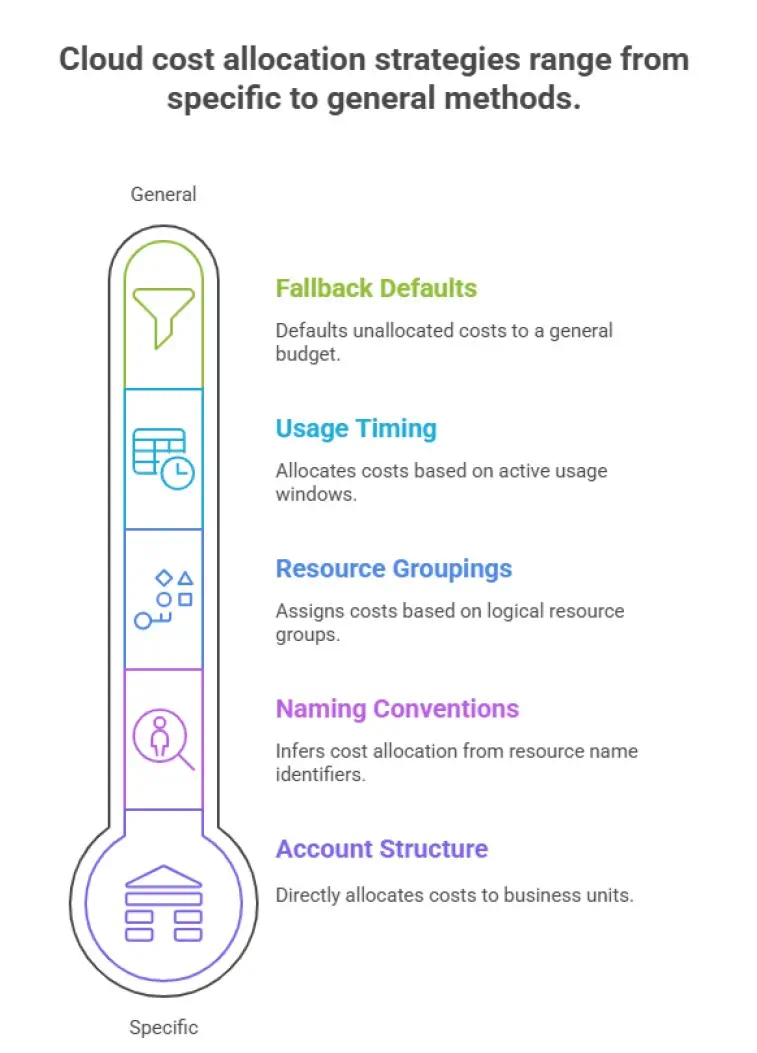When Tagging Isn’t Enough
In our previous post, The Importance of Tagging, we discussed how tagging is foundational for cloud cost visibility. Tagging helps map costs to teams, departments, and projects—but in practice, relying solely on tags can be limiting.
Tagging strategies are notoriously hard to enforce perfectly. Even with strong policies, it’s unlikely anyone will delete a production resource just because it’s missing a tag. Inconsistent tagging, human error, and the manual effort required for retroactive corrections make it difficult to achieve full cost accuracy.
So, what happens when your tag coverage isn’t perfect? Is there a smarter way to manage and allocate cloud costs?

The Limits of a Tag-Only Approach
Tags are powerful—but not foolproof. FinOps teams often encounter these challenges:
● Incomplete Tag Coverage: Not all resources get tagged correctly—or at all.
● Inconsistent Tagging: Teams use different tag formats for the same purpose (Project, project_name, ProjName, etc.).
● Retroactive Cleanup: Fixing tags after the fact takes significant DevOps time and coordination.
These issues result in fragmented reporting, limited visibility, and inaccurate cost attribution—making effective financial management harder than it needs to be.
A Better Way: Rule-Based Cost Allocation
The good news? Tagging isn’t the only tool available. Modern FinOps platforms now support rule-based cost allocation—an intelligent, flexible approach that complements or replaces tagging when necessary.
Instead of relying on a single key-value pair, rule-based allocation uses a hierarchy of criteria to distribute costs accurately. These rules can leverage more consistent metadata and contextual clues, such as:
● Account Structure: Allocate costs based on cloud accounts tied to business units or teams.
● Naming Conventions: Parse resource names that include identifiers (e.g., dev-prod-teamA-db01) to infer purpose.
● Resource Groupings: Assign costs based on logical resource groups or regions.
● Usage Timing: For shared resources, allocate based on active usage windows per team or application.
● Fallback Defaults: Unallocated costs can default to a general budget (e.g., overhead or shared services).

Example: A rule may first check for a Project tag. If missing, it checks the resource’s account ID. If that fails too, it checks for a naming prefix (like team-finance-) and finally defaults to a shared pool.
Why Rule-Based Allocation Works Better
Implementing a flexible, automated rule system to handle cost allocation offers significant advantages:
✅ Better Accuracy, Even with Incomplete Tagging
By using consistent patterns like account ID or naming conventions, rule-based allocation ensures a greater percentage of spend is accurately attributed—even when tags fail.
✅ Align Spend with Business Units
This approach makes it easier to map cloud spend to your org chart, products, or budget categories—even across complex or evolving structures.
✅ Save Time and Reduce Manual Fixes
No more chasing engineers for missing tags. Automating cost attribution frees up DevOps and FinOps teams to focus on strategic tasks.
✅ Strengthen Financial Governance
With clearer allocation logic, finance teams can confidently support chargeback/showback models and enhance organizational accountability.
✅ Adapt as You Grow
As your organization evolves, your rules can evolve too—no need to retroactively apply hundreds of tag fixes.
✅ Fine-Grained Control
Define as many rules as needed. Whether you need broad cost allocation by department or granular tracking down to individual product features, rule-based systems give you full control.
Conclusion: Smarter Allocation Leads to Smarter Cloud Spending
Tagging will always be an important part of any FinOps strategy—but it shouldn’t be your only one. By incorporating rule-based cost allocation, your organization can achieve greater visibility, flexibility, and accuracy in cloud financial management.
The ultimate goal? A unified cost picture that reflects how your business actually operates—without relying on perfect tagging.
